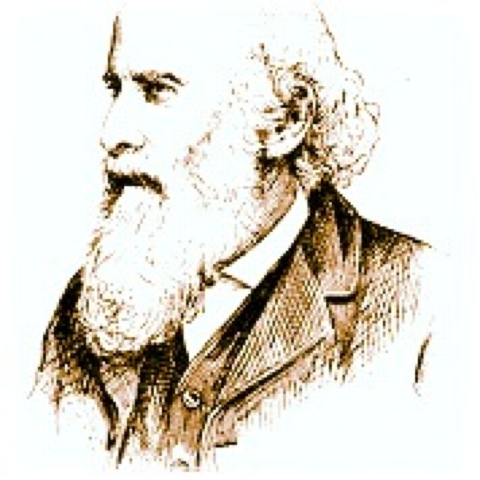From Comets and Spaceships to Annuities
Until recently I only knew Edmond Halley as an astronomer and I still remember our school activity when his famous comet appeared in 1986. Back then, a schoolboy in France, I drew a picture of Halley’s Comet and imagined the world as it will be when the comet returns, that is in 2061. I have no recollection of what I thought the world would look like in 2061. I probably thought of a world with spaceships travelling to Mars and aliens living alongside humans. I am lucky enough to be one of those few people who will probably see the comet twice, provided my survival curve keeps up its rectangularisation. Halley himself didn’t have this opportunity, as he died before the comet returned. That was all I knew about Edmond Halley, until I read his revolutionary article on annuities. You can call me a nerd, but I was quite excited when I found free access to the 1693 article on the Royal Society’s website. It was like discovering the Dead Sea scrolls. I was reading arguably the oldest scientific article of what would become Actuarial Science, and the content was close to what I had learnt in university lectures.
Halley was an astronomer who wasn’t only an astronomer. He was one of those great scientists who explored new fields of studies...
Halley came up with the idea of the “diving bell” among other things. The diving bell was an underwater bell that was fed with barrels of air from the surface. Halley showed that one could stay 4 hours under the water, more exactly 60 feet underwater in the River Thames. What was he trying to achieve? I really have no clue. I don’t know the purpose of staying still, 60 feet underwater, when he was not even looking at beautiful corals or diving with sharks, but in the dirty River Thames, an open sewer until the 19th century. Apparently, all he did was to identify a new medical condition, which is diving barotrauma, caused by too much pressure put on one’s ears. Suffice it to say the diving bell invention never took off.
But let's come back to annuities... In 1693, Edmond Halley, member of the Royal Society, presented his work entitled ‘An Estimate of the Degrees of the Mortality of Mankind, Drawn from Curious Tables of the Births and Funerals at the City of Breslaw; With an Attempt to Ascertain the Price of Annuities upon Lives’. The title of the article constituted an abstract in itself... Edmond Halley laid the foundations of actuarial calculations of annuities. This was indeed the first time someone used mortality rates and compound interests in order to price a lifetime annuity.
Why did Edmond Halley write this notorious article that would shape the method of pricing annuities? The short answer is “because of the French”. Which is a slightly biased interpretation of the history of actuarial studies, proposed by a French actuary, but nonetheless grounded in historical facts.
The political context of the time in which the article was written was the Nine Years’ War. The Nine Years’s war took place between 1688 and 1697 between King Louis XIV of France on one side, and the Grand Alliance on the other side, a coalition of European nations, of which England. It wasn’t the first or the last time France and England would be militarily involved against each other. Several factors had led to this war:
- Rivalry in the North American colonies
- Louis XIV’s revocation of the Edict of Nantes, that led to the dispersal of the French Protestants to neighbouring countries
These factors were fostering the anti-frogs sentiments. When Louis XVI did a pre-emptive strike against the Holy Roman Empire and crossed the Rhine, England and other nations went to war against France.
In 1692, that is 4 years into the Nine Years’ War, and a year before Halley’s article on annuities, the parliament of England issued the “Million Act”, which aimed at raising one million pounds through a system of annuities, called Exchequer Annuities, in order to finance an awfully expensive war against the French. To put this amount into perspective, one million pounds in 1692 represented around 25% of the total annual budget of the English government, and 80% of this budget was used to wage war against the homeland of baguettes. It was the first time the English government was using this type of funding, and you can imagine that potential subscribers would ask themselves the question “Is it a good investment at my age?” Now you see how relevant Halley’s article was when it came out. If annuities were to be issued on such a large scale, people would want to know their actual value.
Of course, this is only one episode in the development of lifetime annuities, but particularly significant because of their mathematical formulation.
Halley was an astronomer who wasn’t only an astronomer. He was one of those great scientists who explored new fields of studies...
Halley came up with the idea of the “diving bell” among other things. The diving bell was an underwater bell that was fed with barrels of air from the surface. Halley showed that one could stay 4 hours under the water, more exactly 60 feet underwater in the River Thames. What was he trying to achieve? I really have no clue. I don’t know the purpose of staying still, 60 feet underwater, when he was not even looking at beautiful corals or diving with sharks, but in the dirty River Thames, an open sewer until the 19th century. Apparently, all he did was to identify a new medical condition, which is diving barotrauma, caused by too much pressure put on one’s ears. Suffice it to say the diving bell invention never took off.
But let's come back to annuities... In 1693, Edmond Halley, member of the Royal Society, presented his work entitled ‘An Estimate of the Degrees of the Mortality of Mankind, Drawn from Curious Tables of the Births and Funerals at the City of Breslaw; With an Attempt to Ascertain the Price of Annuities upon Lives’. The title of the article constituted an abstract in itself... Edmond Halley laid the foundations of actuarial calculations of annuities. This was indeed the first time someone used mortality rates and compound interests in order to price a lifetime annuity.
Why did Edmond Halley write this notorious article that would shape the method of pricing annuities? The short answer is “because of the French”. Which is a slightly biased interpretation of the history of actuarial studies, proposed by a French actuary, but nonetheless grounded in historical facts.
The political context of the time in which the article was written was the Nine Years’ War. The Nine Years’s war took place between 1688 and 1697 between King Louis XIV of France on one side, and the Grand Alliance on the other side, a coalition of European nations, of which England. It wasn’t the first or the last time France and England would be militarily involved against each other. Several factors had led to this war:
- Rivalry in the North American colonies
- Louis XIV’s revocation of the Edict of Nantes, that led to the dispersal of the French Protestants to neighbouring countries
These factors were fostering the anti-frogs sentiments. When Louis XVI did a pre-emptive strike against the Holy Roman Empire and crossed the Rhine, England and other nations went to war against France.
In 1692, that is 4 years into the Nine Years’ War, and a year before Halley’s article on annuities, the parliament of England issued the “Million Act”, which aimed at raising one million pounds through a system of annuities, called Exchequer Annuities, in order to finance an awfully expensive war against the French. To put this amount into perspective, one million pounds in 1692 represented around 25% of the total annual budget of the English government, and 80% of this budget was used to wage war against the homeland of baguettes. It was the first time the English government was using this type of funding, and you can imagine that potential subscribers would ask themselves the question “Is it a good investment at my age?” Now you see how relevant Halley’s article was when it came out. If annuities were to be issued on such a large scale, people would want to know their actual value.
Of course, this is only one episode in the development of lifetime annuities, but particularly significant because of their mathematical formulation.




Comments
Post a Comment